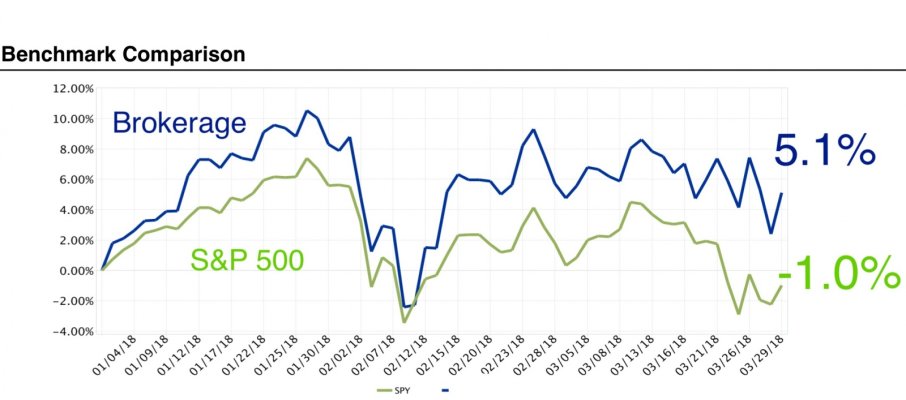Time-Weighted Rate of Return Calculation Examples
As noted, the time-weighted return eliminates the effects of portfolio cash flows on returns. To see this how it works, consider the following two investor scenarios:
Investor 1 invests $1 million into Mutual Fund A on December 31. On August 15 of the following year, his portfolio is valued at $1,162,484. At that point, he adds $100,000 to Mutual Fund A, bringing the total value to $1,262,484. By the end of the year, the portfolio has decreased in value to $1,192,328.
- The holding-period return for the first period, from December 31 to August 15, would be calculated as:
Return = ($1,162,484 - $1,000,000) / $1,000,000 = 16.25%
- The holding-period return for the second period, from August 15 to December 31, would be calculated as:
Return = ($1,192,328 - ($1,162,484 + $100,000)) / ($1,162,484 + $100,000) = -5.56%
- The time-weighted return over the two time periods is calculated by geometrically linking these two returns:
Time-weighted return = (1 + 16.25%) x (1 + (-5.56%)) - 1 = 9.79%
Investor 2 invests $1 million into Mutual Fund A on December 31. On August 15 of the following year, her portfolio is valued at $1,162,484. At that point, she withdraws $100,000 from Mutual Fund A, bringing the total value down to $1,062,484. By the end of the year the portfolio has decreased in value to $1,003,440.
- The holding-period return for the first period, from December 31 to August 15, would be calculated as:
Return = ($1,162,484 - $1,000,000) / $1,000,000 = 16.25%
- The holding-period return for the second period, from August 15 to December 31, would be calculated as:
Return = ($1,003,440 - ($1,162,484 - $100,000)) / ($1,162,484 - $100,000) = -5.56%
- The time-weighted return over the two time periods is calculated by geometrically linking these two returns:
Time-weighted return = (1 + 16.25%) x (1 + (-5.56%)) - 1 = 9.79%
Read more: Time-Weighted Rate of Return
https://www.investopedia.com/terms/t/time-weightedror.asp#ixzz5BFKD0Vjb
Follow us: Investopedia on Facebook

